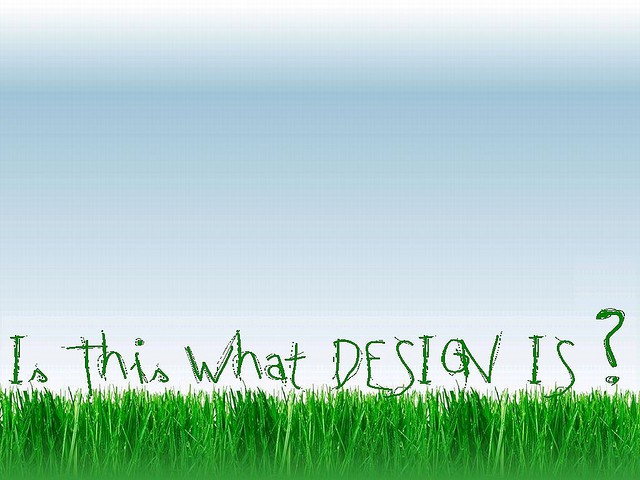I often have trouble making people understand that I am primarily a web developer, not a designer (or even that there’s a difference). Perhaps it’s because my degree is officially titled Web Design and Interactive Media.
One of the reasons I chose to attend the Art Institute of Portland is that, at a time when most people in industry were insisting that you HAD to choose between design and development, AIP was a place where I could learn both. I’m still glad I made that choice.
One of the things I learned in my time there is that I don’t like doing design. I can do it if I have to, but it takes me a long time and I don’t enjoy it. I prefer to leave visual design[1] to folks more talented and better suited to it. I have great respect for their craft. There’s nothing I love more than building a well made original design into a working site.
However my design education and my experience as someone who uses and builds the web has made me pretty opinionated about design. There are a lot of amazing looking websites on the internet that are terrible to actually use. My love for a beautiful design stops short at the point where you lose sight of your purpose (you do know why you’re building this right?) and make it hard for your audience to actually do what they came to do.
- If all those amazing graphics cause your site to take 3 seconds to load, you could lose 40% of your visitors.[2]
- If hungry people visiting your restaurant website can’t find your hours, your phone number or load your PDF menu, they’ll eat somewhere else.
- If your beautiful blog post is written in a font size that’s too small to read, I’ll open a book.
- No one is looking at the giant carousel slider on your home page.
- Still building non-responsive sites? Mobile users surpassed desktop way back in 2014.
Somewhere along the way, people became more concerned with form than with function when it comes to the web. You probably wouldn’t design the cover of your unwritten novel, but the web industry is filled with designers and developers who are happy to paint a pretty picture of your website and even build it before anyone sits down to figure out what it’s actually going to say.
My approach to websites is content first. When potential clients approach me to work together, the first step is for them to fill out my project inquiry form. That’s not just me making you jump through hoops. I want to know if YOU know why you’re building whatever it is you want to build. I want to know what your business goals are, who the site is for and what success looks like to you. If you don’t know, or aren’t willing to figure those things out, then we probably aren’t a good match to work together.
Websites are expensive. If you don’t know why you’re doing it, and what your end goal is, then you’re most likely wasting your time and money building the wrong thing. Your site shouldn’t be an expense, but an investment that gives you something in return, whether it’s readers or customers, or just a place on the web that you own to house your thoughts without being subject to the whims and spying of third party social media sites.
Once you define your goals, they should be the touch stones that you use to guide your design and development decisions. I often have to remind clients and myself that the sites we build are not for us, but for the people who use them. If I want a quick reminder of the importance of that, I just go surf a few terrible restaurant websites. There are so many to choose from.
The more I use and build the web, the more I have come to love simplicity. Most of the sites I visit over and over again, don’t have flashy designs or parallax scrolling. What they do have is useful information, presented in a way that is attractive and easy to navigate.
Am I against pretty websites? Of course not. But a good web designer isn’t just painting you a pretty picture. A good designer understands how design services your goals and uses good design principles to help you achieve them.
And they make it look pretty in the process.
UPDATE January 19, 2018: This post is 4 years old but still relevant. Proof: The crew at Thrive Themes just published a similar article – Don't Get Stuck in the Presentation Layer.
- There are many different types of design, but I use visual design to refer specifically to people who create beautiful visuals that make a website ‘pop’ Sometimes the same person or people will also be responsible for UX (User Experience) design which is more about how people interact with your site.
- 40% of people will abandon a web page if it takes more than 3 second to load. (Source)


